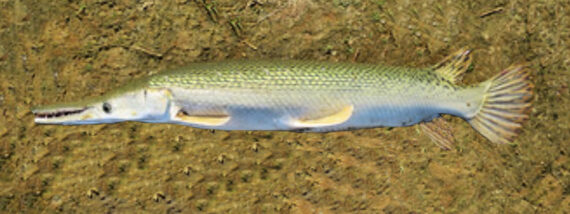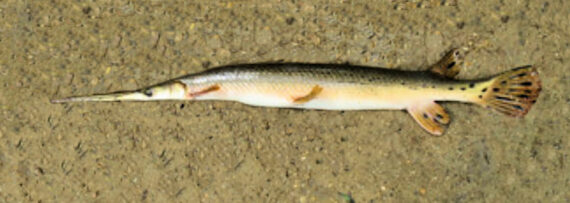The Gar Family – Lepisoteidae
There are currently THREE members of the Gar or Lepisoteidae Family, all from the freshwaters systems of Mexico’s Atlantic Slope, presented in this website:
FROM THE ATLANTIC (3):
The Gar or Lepisoteidae Family has seven global members that are found in two genera of which five are found in Mexican waters, all in the freshwater and brackish water systems of the Atlantic Ocean. They are known in Mexico’s fishing areas as pejelagartos. They are a circumglobal, tropical, and subtropical family and are found in warm, shallow, bays, lakes and rivers in weedy areas in all tropical and temperate seas in North American to Costa Rica.
The Gars have elongated, wide and stocky tubular shaped body with heterocercal tails and heads that mouths with elongated jaws with long, sharp needlelike teeth. They are a deep green to yellow to brown in color dorsally that transitions to white and yellow ventrally. Their dorsal fin is found at the rear with a limited under of rays. They are covered with armored ganoid scales. They have vascularized swim bladders that allows them to absorb air off the surface and able to tolerate conditions that most other fishes cannot survive. They large fish that reach length of 3 m (10 feet) and 160 kg (350 pounds) in weight. Their reproductive guild is nonguarders. The Gars, in general, are poorly studied with very limited information available about their lifestyle and behavioral patterns including specific details on age, growth, longevity, movement patterns, diet, habitat use, and reproduction.
The Gars congregate in small groups and are slow-moving that are voracious lay in wait ambush predators that feed on smaller fish and invertebrates such as crabs. In turn they have only a few predators which include alligators, large birds and fish and snakes. The individual species vary by snout length, number of rows of teeth and the amount and locations of spots. The largest member of the family, the Alligator Gar, is a popular with recreational anglers. They are considered to be a marginal human food fish, their skin and scales are used to produce arrowheads for hunting, jewelry and lamp shades; and, their eggs are highly toxic. Many are utilized by the aquarium trade. They are prone to overfishing and dam construction that limits access to the flood plains in which they spawn. They are considered as a positive contributor to the environment by controlling the populations of invasive Asian Carps. Where introduced gars prey on and out-complete native species and subsequently disrupt local ecosystems. They date to the Cretaceous Period, 66 to 145 million years ago.


